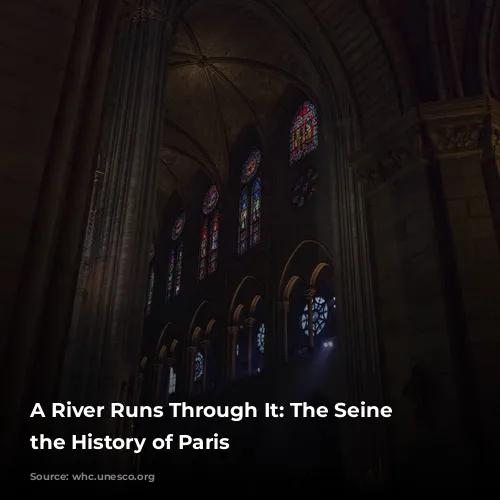The Seine River, a ribbon of silver winding through the heart of Paris, isn’t just a waterway; it’s a living tapestry woven with centuries of history and architectural brilliance. From the grandeur of the Louvre to the iconic Eiffel Tower, the river reflects the city’s evolution, showcasing a remarkable timeline of artistic and urban development. This is a story told in stone, steel, and glass, where every bridge, every monument, every cobblestone whispers of Paris’s captivating past.

A City Shaped by a River
Paris, a city born on the banks of the Seine, has long embraced its river. The Seine, a vital artery for commerce and defense, carved a path through the landscape, shaping the city’s growth and defining its character. From the strategic confluence of the Marne and Oise rivers to the strategically placed Ile de la Cité and Ile St Louis, the Seine’s influence is undeniable.
The river’s course became a canvas for Parisian ingenuity. The city’s architects and urban planners, responding to the river’s presence, crafted a harmonious blend of bridges, quays, and grand avenues. This masterful orchestration of space and structure has earned the Seine a unique place in the world’s architectural heritage.
Monuments and Masterpieces: A River of Art and History
Imagine strolling along the Seine, taking in the panorama of Paris. You’d see the Louvre, a testament to French classicism, standing guard over the riverbank. The Eiffel Tower, a symbol of innovation and Parisian ambition, rises above the city, its intricate ironwork a testament to the city’s love affair with bold architectural feats.
The Seine becomes a timeline of artistic achievement, showcasing the grandeur of Notre-Dame Cathedral and the Sainte Chapelle, both architectural masterpieces of the Middle Ages. The Pont Neuf, a bridge embodying the spirit of the French Renaissance, invites you to walk back in time, its elegant arches whispering tales of a bygone era.
A Legacy of Architectural Influence
The Seine’s influence extends far beyond the borders of Paris. Its architectural masterpieces, from the medieval grandeur of Notre-Dame to the modern elegance of the Grand Palais, have inspired generations of architects and city planners around the world. The city’s harmonious layout, with its wide boulevards and grand squares, a vision crafted by Baron Haussmann under Napoleon III, became a blueprint for urban development, particularly in Latin America.
The Seine’s legacy is also one of innovative design. The Eiffel Tower, a symbol of the Universal Exhibitions that transformed Paris in the 19th and 20th centuries, remains a testament to the ingenuity of engineers and the city’s commitment to artistic exploration.
Protecting Paris’s Riverfront Legacy
The Seine, with its rich historical tapestry and architectural marvels, is a treasure to be preserved. Recognizing its Outstanding Universal Value, UNESCO designated the Seine Riverbanks of Paris a World Heritage Site in 1991. The city, through its commitment to protecting its heritage, continues to uphold the river’s legacy for future generations.
Through meticulous preservation efforts and the ongoing implementation of management plans, the Seine’s allure continues to captivate visitors and residents alike. From the timeless elegance of the medieval churches to the innovative architecture of the Eiffel Tower, the Seine remains a powerful reminder of Paris’s unwavering commitment to its cultural heritage. The river, a constant presence through time, stands as a testament to the city’s enduring beauty and its rich historical legacy.
